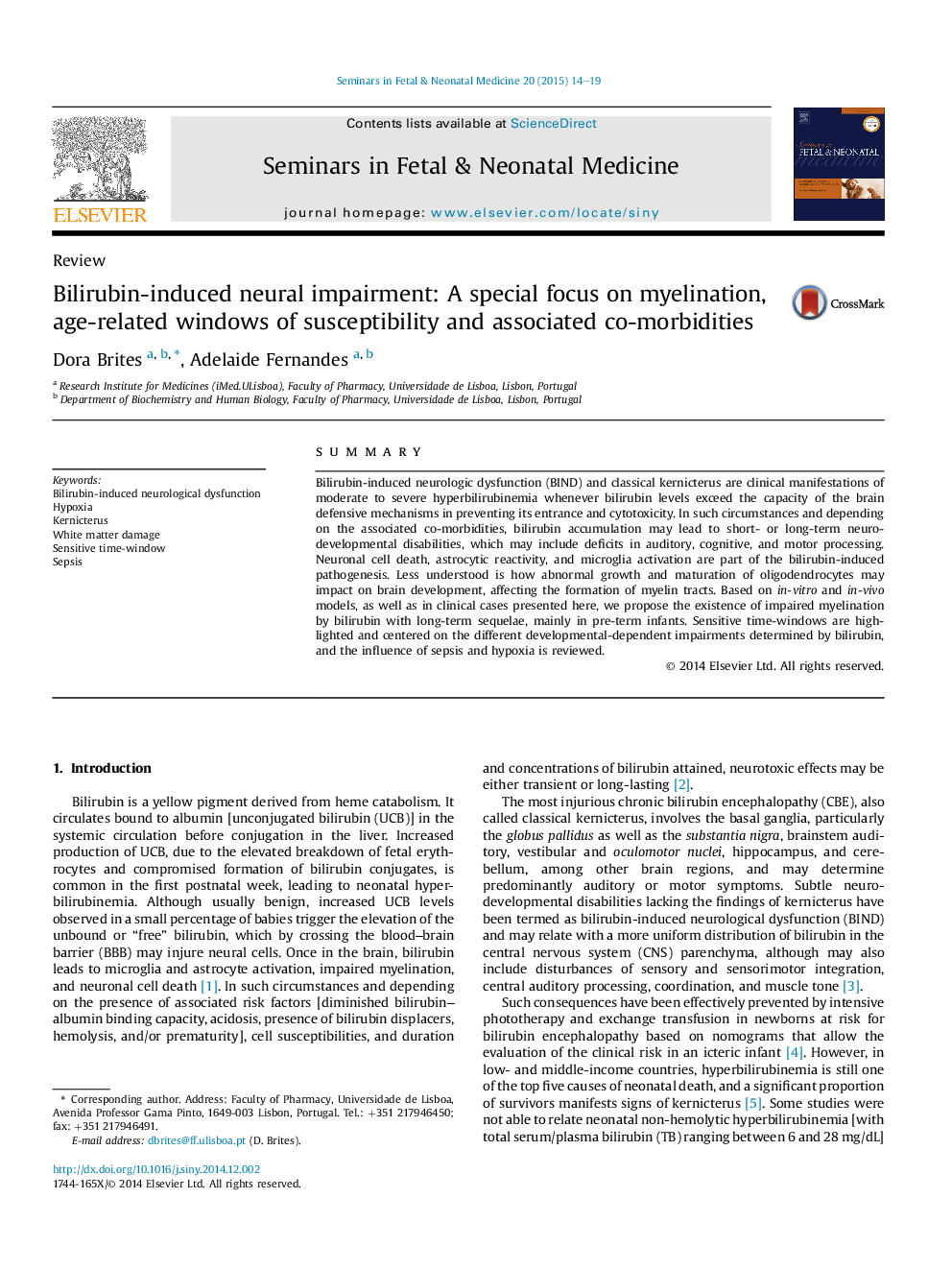| Article ID | Journal | Published Year | Pages | File Type |
|---|---|---|---|---|
| 3974080 | Seminars in Fetal and Neonatal Medicine | 2015 | 6 Pages |
SummaryBilirubin-induced neurologic dysfunction (BIND) and classical kernicterus are clinical manifestations of moderate to severe hyperbilirubinemia whenever bilirubin levels exceed the capacity of the brain defensive mechanisms in preventing its entrance and cytotoxicity. In such circumstances and depending on the associated co-morbidities, bilirubin accumulation may lead to short- or long-term neurodevelopmental disabilities, which may include deficits in auditory, cognitive, and motor processing. Neuronal cell death, astrocytic reactivity, and microglia activation are part of the bilirubin-induced pathogenesis. Less understood is how abnormal growth and maturation of oligodendrocytes may impact on brain development, affecting the formation of myelin tracts. Based on in-vitro and in-vivo models, as well as in clinical cases presented here, we propose the existence of impaired myelination by bilirubin with long-term sequelae, mainly in pre-term infants. Sensitive time-windows are highlighted and centered on the different developmental-dependent impairments determined by bilirubin, and the influence of sepsis and hypoxia is reviewed.
